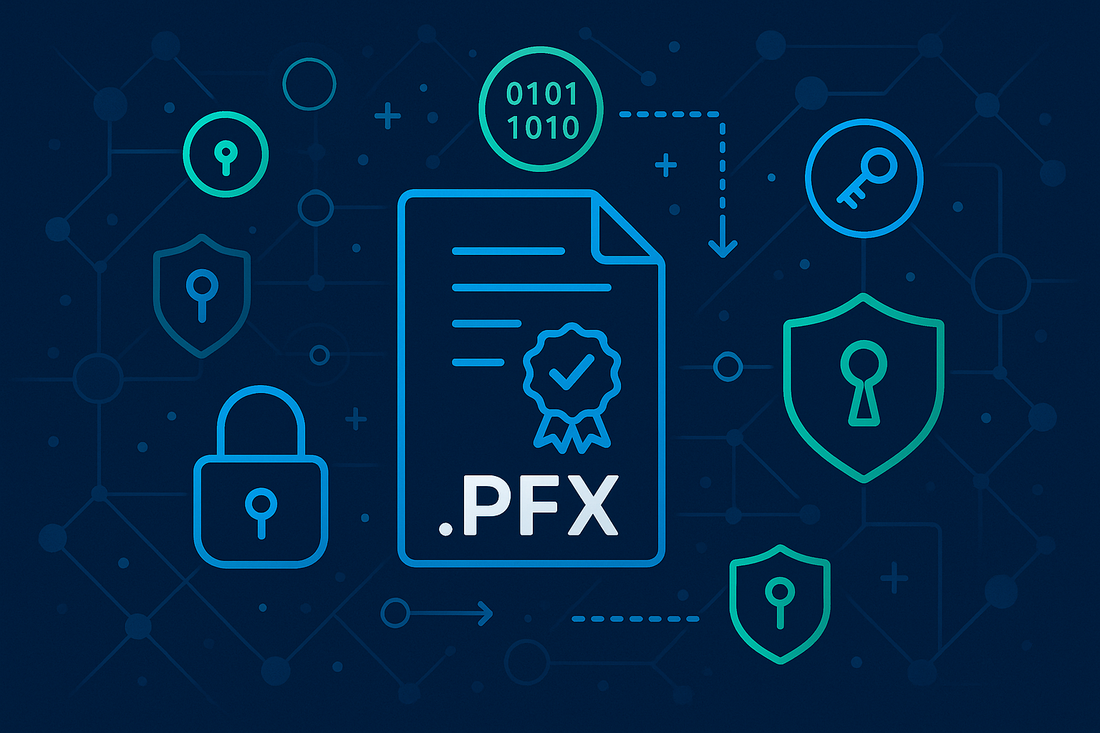
Understanding PFX (Personal Information Exchange) Files
Zane LucasShare
Trustico® customers often encounter PFX files when managing their SSL Certificates. These specialized files serve a critical purpose in the digital security ecosystem, yet many users remain unfamiliar with their function and importance.
Here's some information that explains what PFX files are, how they relate to SSL Certificates, and when you might need to use them.
What Is a PFX File
A PFX file, also known as Personal Information Exchange, is a secure container format that bundles multiple cryptographic elements together. This format stores your SSL Certificate, private key, and often the intermediate certificates from your Certificate Authority (CA) in a single encrypted file.
PFX files typically use the .pfx or .p12 file extension, with the latter being more common on macOS and iOS systems.
The primary advantage of a PFX file is convenience. Rather than managing multiple files for your SSL Certificate implementation, a PFX file combines everything needed for proper SSL Certificate installation into one protected package.
The Relationship Between PFX Files and SSL Certificates
SSL Certificates require proper installation to function correctly on your web server. This installation process typically involves three key components : your SSL Certificate issued by the Certificate Authority, your private key generated during the Certificate Signing Request (CSR) creation, and any intermediate certificates needed to establish the chain of trust.
PFX files simplify this process by bundling all these components together.
When you need to move your SSL Certificate between servers or create backups of your digital credentials, using a PFX file ensures that all necessary components remain together and properly protected.
When to Use PFX Files
Several scenarios call for the use of PFX files in SSL Certificate management. Understanding these situations helps ensure proper security implementation across your digital infrastructure.
Server Migration and Backup
When migrating web services between servers, transferring individual certificate files can become cumbersome and error-prone. PFX files allow for seamless transfer of all certificate components at once. Similarly, maintaining regular backups of your SSL Certificate installation becomes more manageable when using the PFX format.
Windows Server Environments
Microsoft Windows servers and services particularly favor the PFX format. Internet Information Services (IIS), Exchange Server, and other Microsoft platforms often request PFX files during SSL Certificate installation.
The Windows certificate store specifically works well with this format, making it the preferred choice for Windows-based deployments.
Code Signing Applications
Beyond web server SSL Certificates, PFX files play an important role in code signing operations. Developers who need to digitally sign their applications or scripts often store their code signing certificates in PFX format for security and portability.
Creating and Managing PFX Files
Converting your existing SSL Certificate and private key into a PFX file requires specific tools.
OpenSSL remains the most common utility for this purpose, allowing users to combine certificate files and protect them with a strong password. This password serves as an additional security layer, preventing unauthorized access to the sensitive private key material contained within.
When creating a PFX file, always use a strong, unique password and store it securely. Remember that anyone with access to both the PFX file and its password gains complete control over your SSL Certificate and private key.
Security Considerations
The consolidated nature of PFX files presents both advantages and potential risks. While convenient, a PFX file contains your private key—the most sensitive component of your SSL Certificate implementation. Proper protection of these files remains essential to maintaining your security posture.
Always store PFX files in secure locations with appropriate access controls. Implement strong passwords when creating these files, and consider using separate secure channels when transferring the file and its password
Remember that compromise of a PFX file potentially exposes your private key, which could allow malicious actors to impersonate your secure website or service.
Conclusion
PFX files serve as valuable tools in SSL Certificate management, particularly in Windows environments and during certificate migration scenarios.
By understanding their purpose and proper handling procedures, you can leverage these files to streamline your SSL Certificate deployment while maintaining appropriate security controls.
For assistance with SSL Certificate installation, PFX conversion, or any other aspects of digital certificate management, Trustico® provides comprehensive support and resources to ensure your implementation proceeds smoothly and securely.



